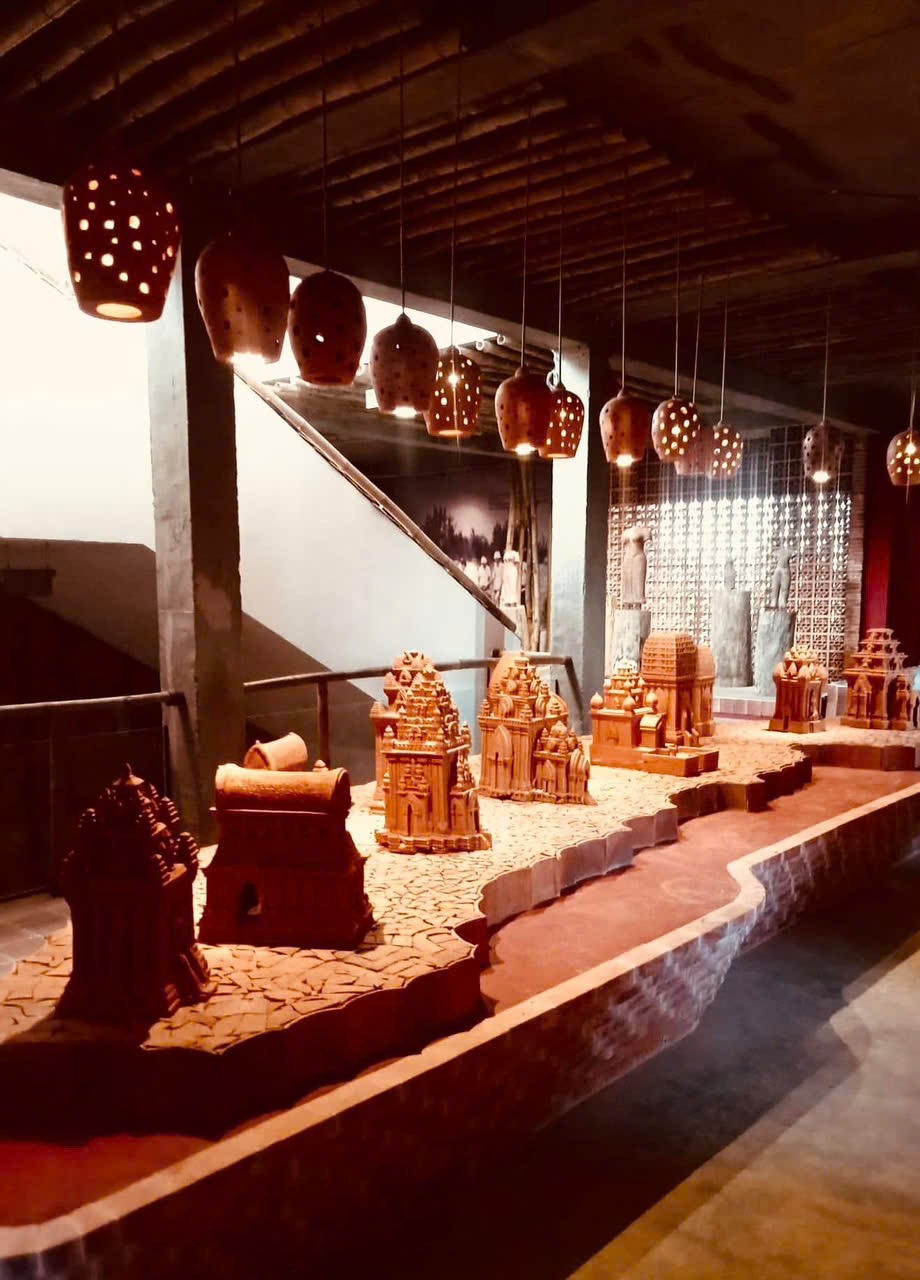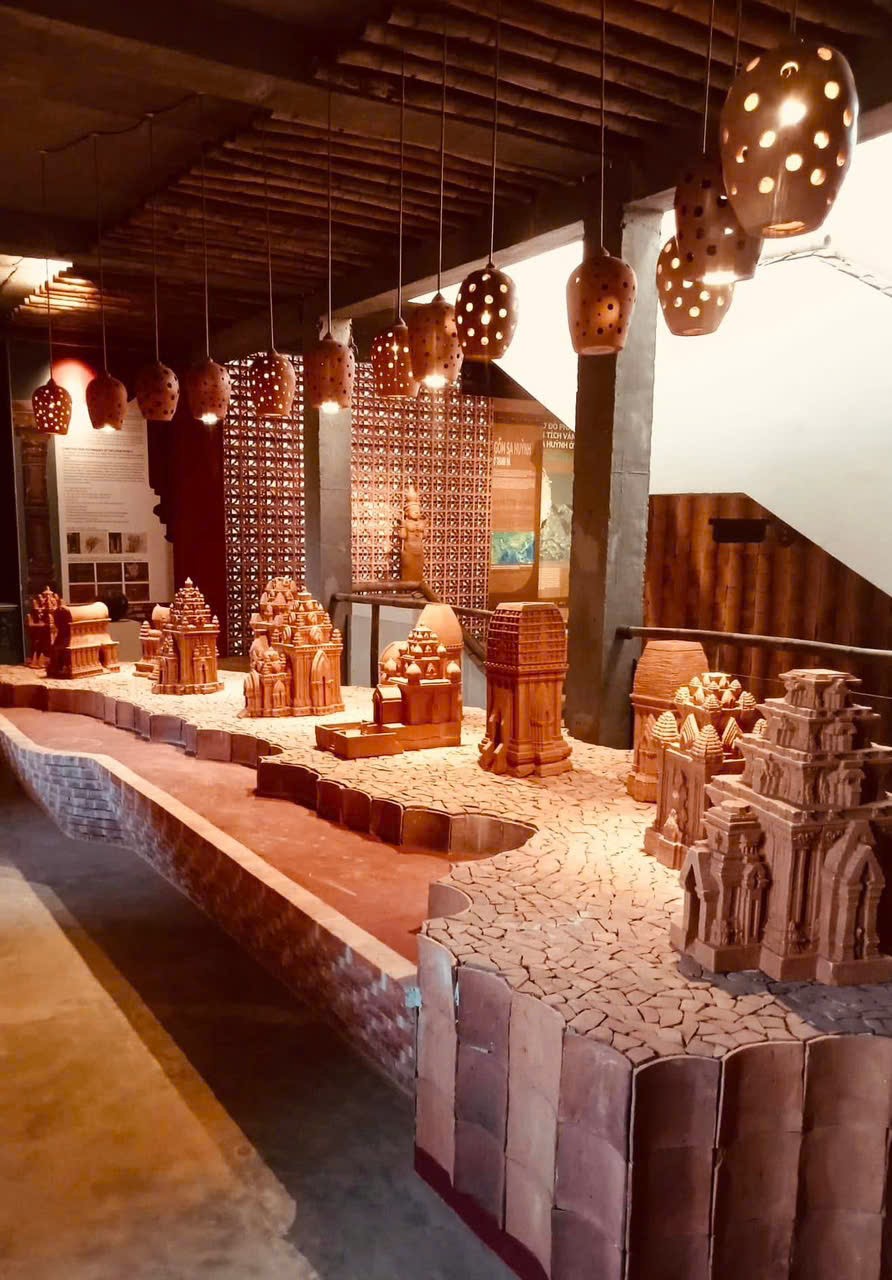
Introduce :
According to legend, continuing on the lands of Sa Huynh culture, the Champa kingdom was formed and ruled by two clans: Cau (Kramuk Vansh); and Dua (Narikel Vansh).
Ceramic artifacts found at several sites in the Sa Huynh-Champa cultural region reveal evidence of continuity in the lives of people living along the rivers of Central Vietnam.
Once upon a time, so long ago that no one remembers anymore, there was a Cham people, the Champa kingdom in Central Vietnam.
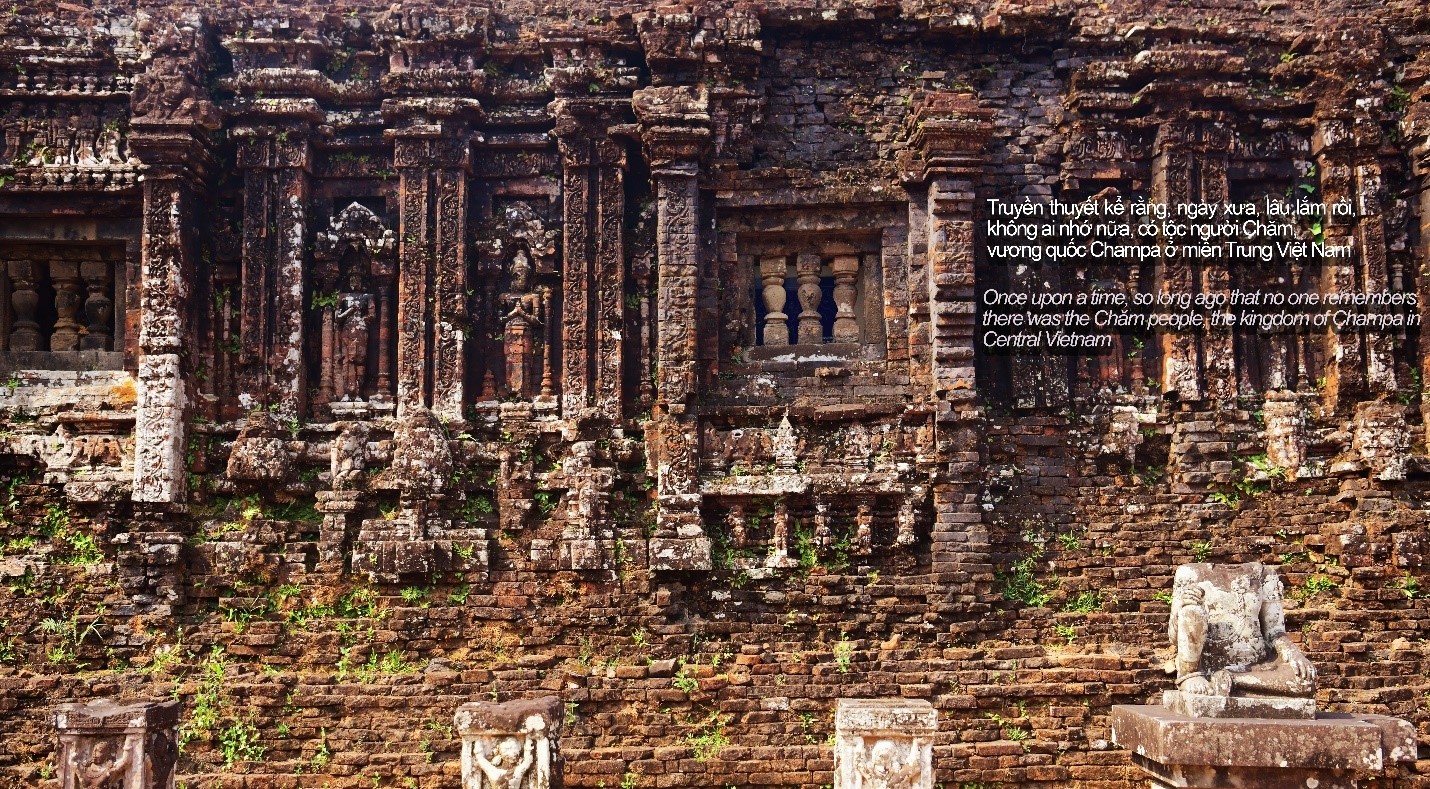
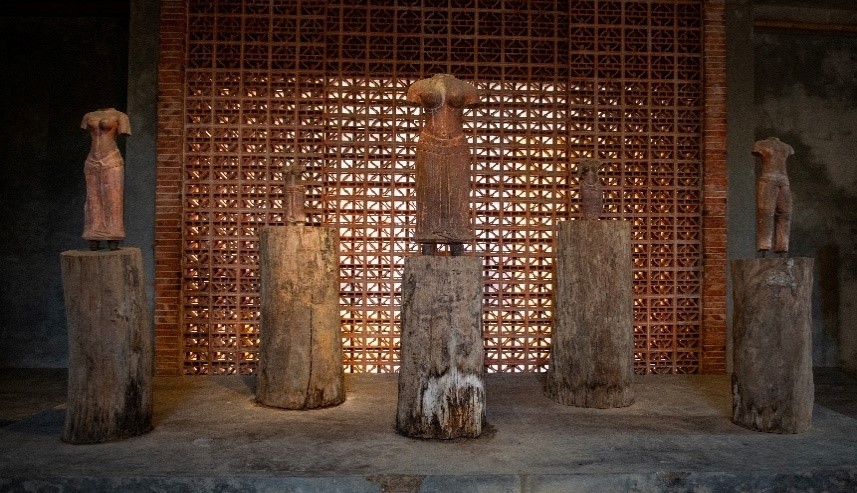
Kingdom of Champa
Champa - an ancient kingdom of the coastal residents of Central Vietnam was formed. From the Austronesian groups drifting at sea and then settling here, over the years they built the ancient kingdom of Champa - becoming the Cham people, with its own history of development and more than 15 centuries of existence...
Ancient relics in Southeast Asia and Champa
In the 10th century, a unique century in its history, Champa was a comprehensively developed kingdom, standing firm while a series of ancient mainland Southeast Asian nations born at the same time were destroyed. Perhaps in a favorable regional context, Champa knew how to promote its strengths, opening up exchanges with the outside world.
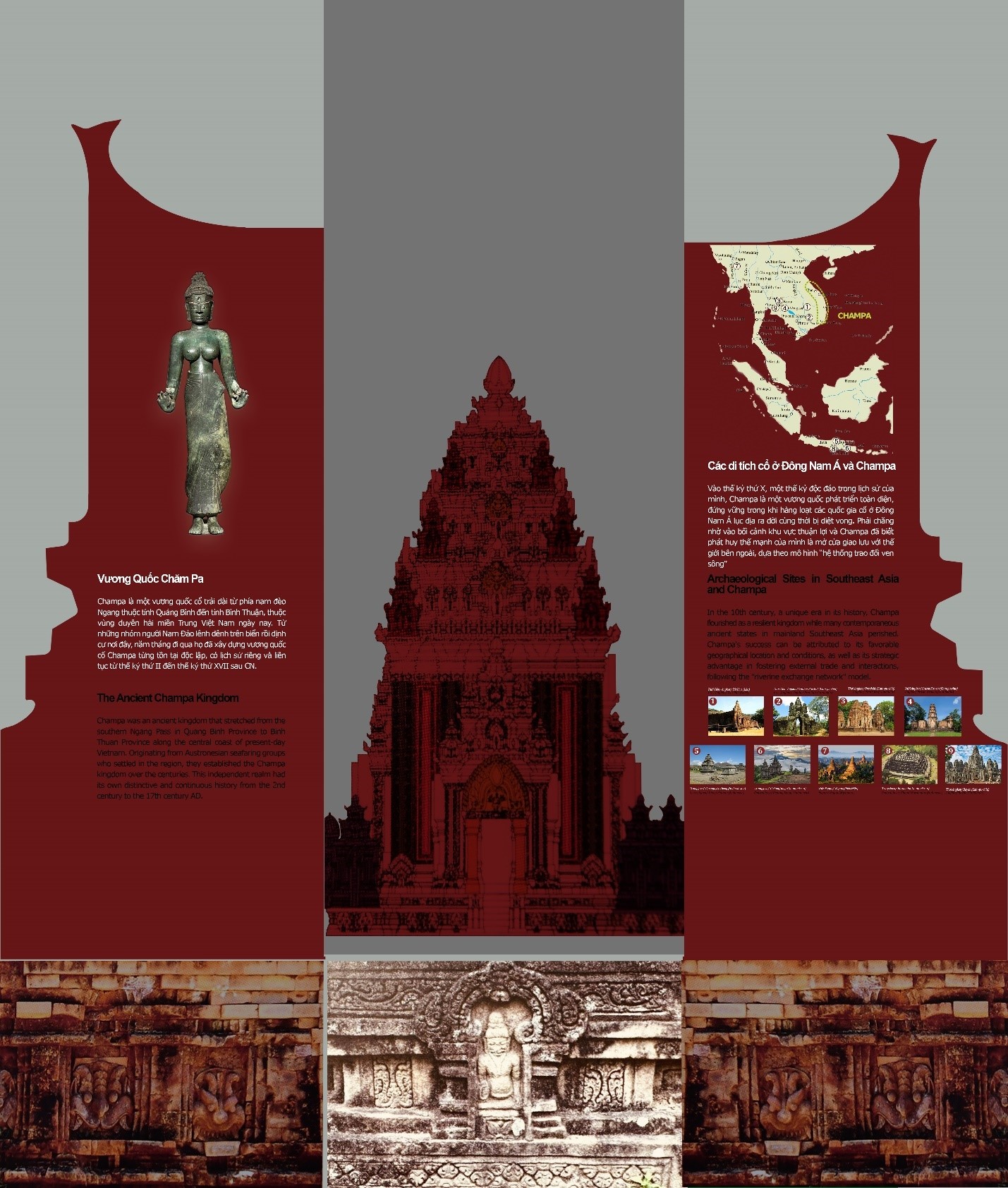
Hairstyles in Cham sculpture
Three popular traditional hairstyles of Champa girls in the past included: * Head combed into a large bun at the back, or in the middle of the nape, or to one side. * Head combed and then piled up into three layers. A ring of jewelry was placed along the head from the hairline to the top. * Head combed and then braided like a triangle, then rolled into a snake shape high up towards the top of the head.
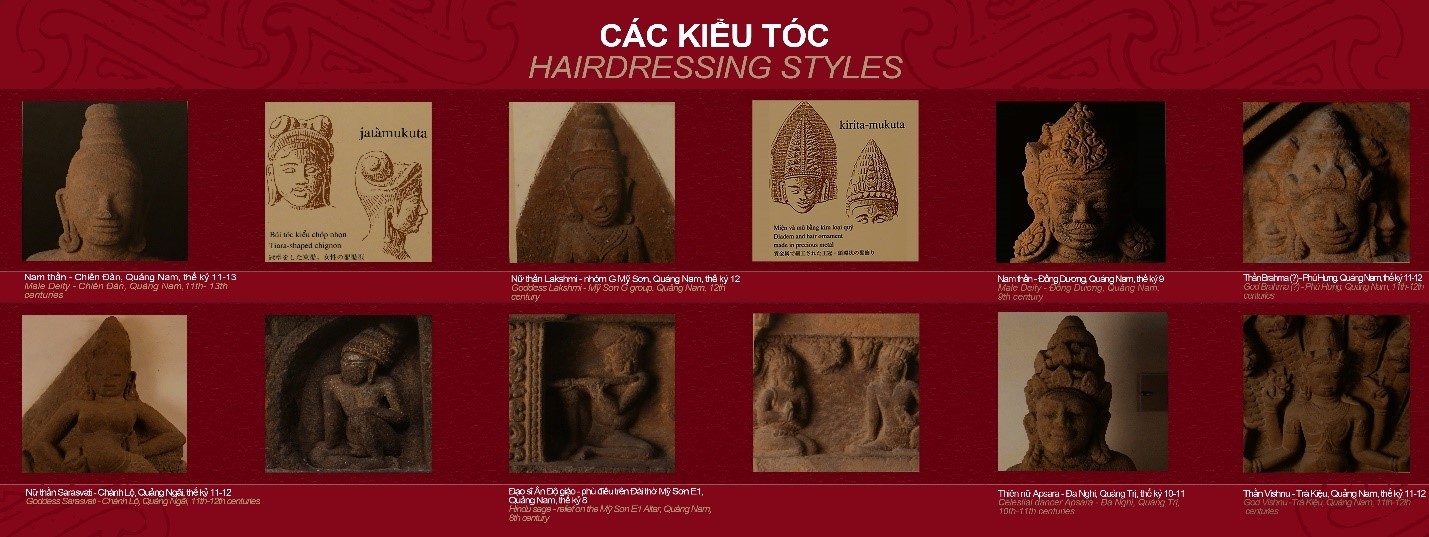
Types of clothing: Tube tops and Sarongs
Three popular traditional hairstyles of Champa girls in the past included: * Head combed into a large bun at the back, or in the middle of the nape, or to one side. * Head combed and then piled up into three layers. A ring of jewelry was placed along the head from the hairline to the top. * Head combed and then braided like a triangle, then rolled into a snake shape high up towards the top of the head.
Dances and musical instruments
The Champa people treasure three musical instruments: the Saranai trumpet, the Basanung drum, and the Ginang drum, because they symbolize man, heaven, and earth as a complete entity. Therefore, when performing, these three instruments always blend together and cannot be separated, in which the Saranai trumpet is the main instrument.
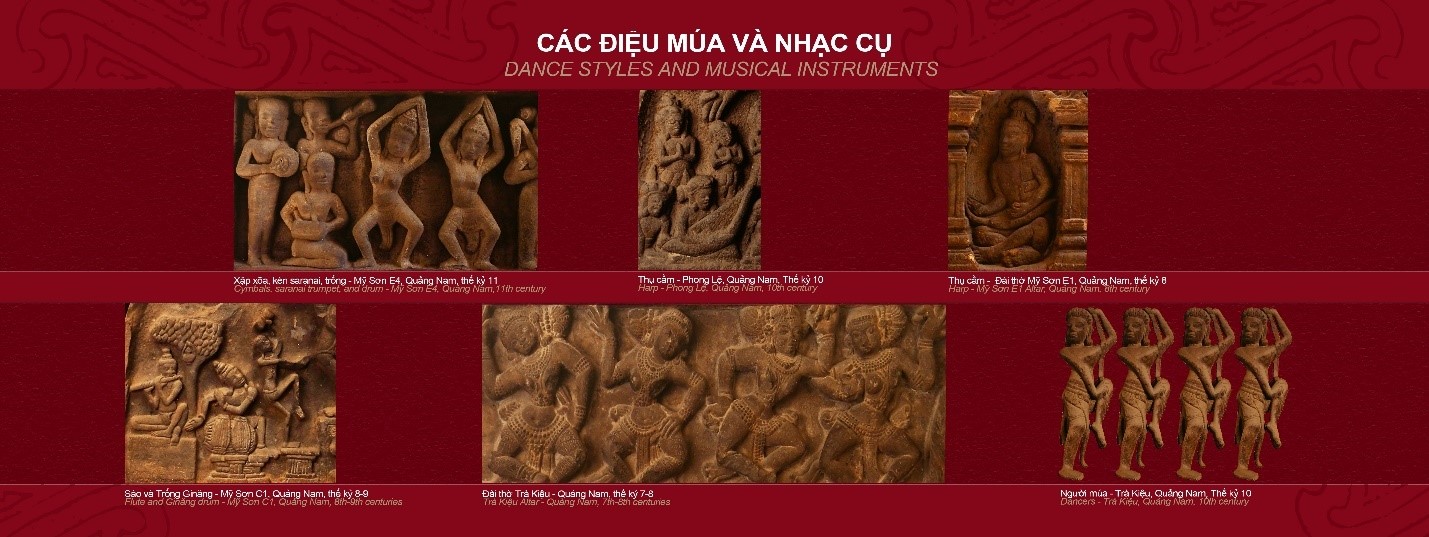
Decorative animal images
The art of carving and carving elaborately depicting flowers, leaves, birds, dancers, and gods is shown on the outer wall of the tower. Popular patterns include: chrysanthemums, lotuses, vines, worms, water waves, flames, geometric patterns, animal patterns... Many places also decorate with typical animal patterns such as: Naga and Shesha snake gods, Makara sea monster, Kala god, Garuda bird god, Gajasimha elephant and lion statue...
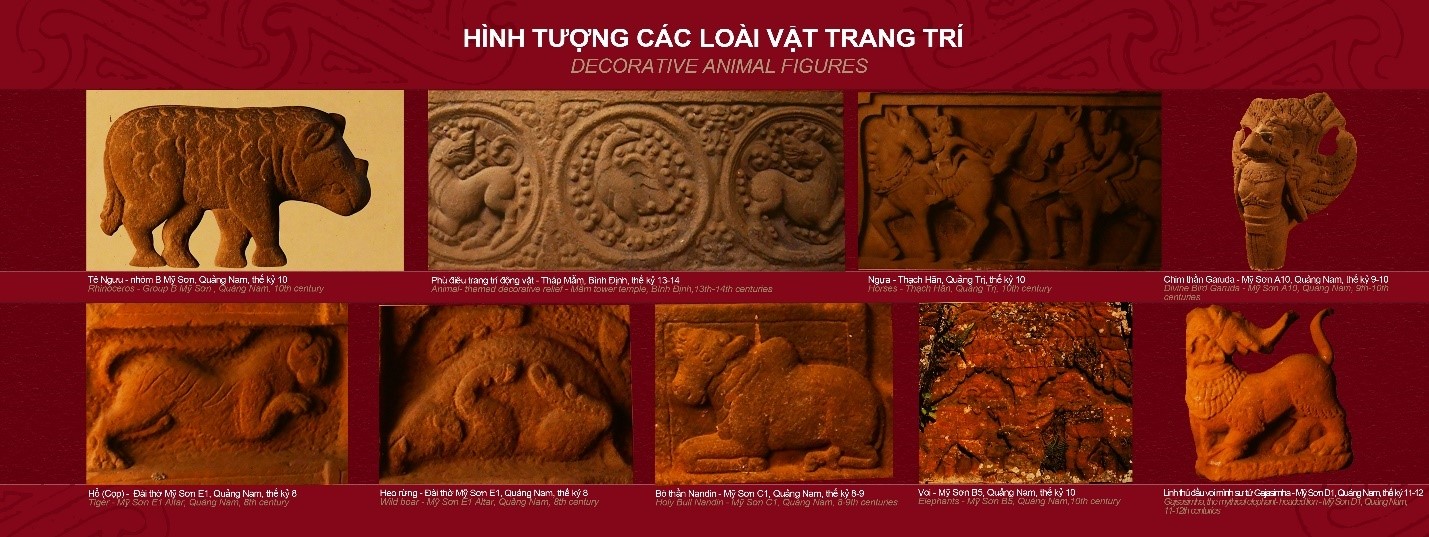
Terracotta details decorate the Tower
The legacy of Champa art left today includes: stone sculpture, painting and Champa music, the most prominent of which are architecture and sculpture in the Champa tower
The pinnacles of the towers were incorporated into the cornices and decorated with lotus petals. Some of this group have short carved Cham inscriptions.
The towers are placed on a layer of bricks arranged in a pyramid shape, at the corners of the three-tiered roof terrace. A stone pyramid cap is used to cover the top of this roof terrace.
Architectural decoration patterns
The architectural elements of Group G were made entirely of terracotta by different groups of craftsmen. Thin traces of plaster were also found, indicating that these samples were once stained. These elements enriched the decorative details in the monumental structure and superstructure.
The embellishments and religious messages in the structures are embedded in different areas such as the wall above the door, the front panel, the motifs and decorative accents with symbolic images of nature, humans and animals. This is in contrast to the plain masonry, which does not have any carved decorative motifs on the bricks.
It is likely that there were paintings that decorated the entire surface of the temple similar to those found on Khmer or Indian monuments; these decorations have now disappeared due to erosion. About 30 trilobed panels of similar size were found under the rubble of the surrounding wall. These decorations may have been attached to this wall, with holes to create the effect of light and shadow.
CONSTRUCTION TECHNIQUES OF THE CHAM PEOPLE
The uniqueness of Cham architecture is expressed through both the shape and the construction method. The shape of each temple remains the same over the years while the decorative motifs change over time.
Ancient masters used soft fired bricks assembled by hand rubbing to build a monumental structure. The thin joints, typical of Cham masonry, were created using the technique of grinding. The molds, niches, and facades were carved into the bricks and masonry after the construction of the temples was completed.
Tower model area
In terms of religious art, over the centuries, the Cham people have built many large-scale architectural and sculptural works - Hindu and Buddhist towers with skillful structural techniques, sophisticated and diverse decorations, expressing a unique aesthetic personality.
Today, there are still about 24 groups of temples and towers made of baked bricks combined with sandstone at famous relics such as My Son, Dong Duong, Po Nagar Nha Trang, Duong Long... along with thousands of sculptures made of sandstone and alloy displayed in domestic and international museums. Champa art has contributed to creating a unique appearance of Southeast Asian art alongside the magnificent Indian art (Parmentier 1909; 1918; Boisselier 1963; Tran Ky Phuong, Shigeeda 1997; 2005).
Champa architecture stands out with towers built with special bricks, without mortar but still durable. Champa bricks are always bright red and not moldy. The towers are a harmonious, tight combination of construction technology and sculpture and decoration. The towers are for worship, spirituality and higher philosophical meaning. The architectural and sculptural decorations are rhythmic, repetitive, uniform and symmetrical. The decorative arches on Champa temples are products of the Cham people based on the absorption of images from other cultures, especially Indian culture.
